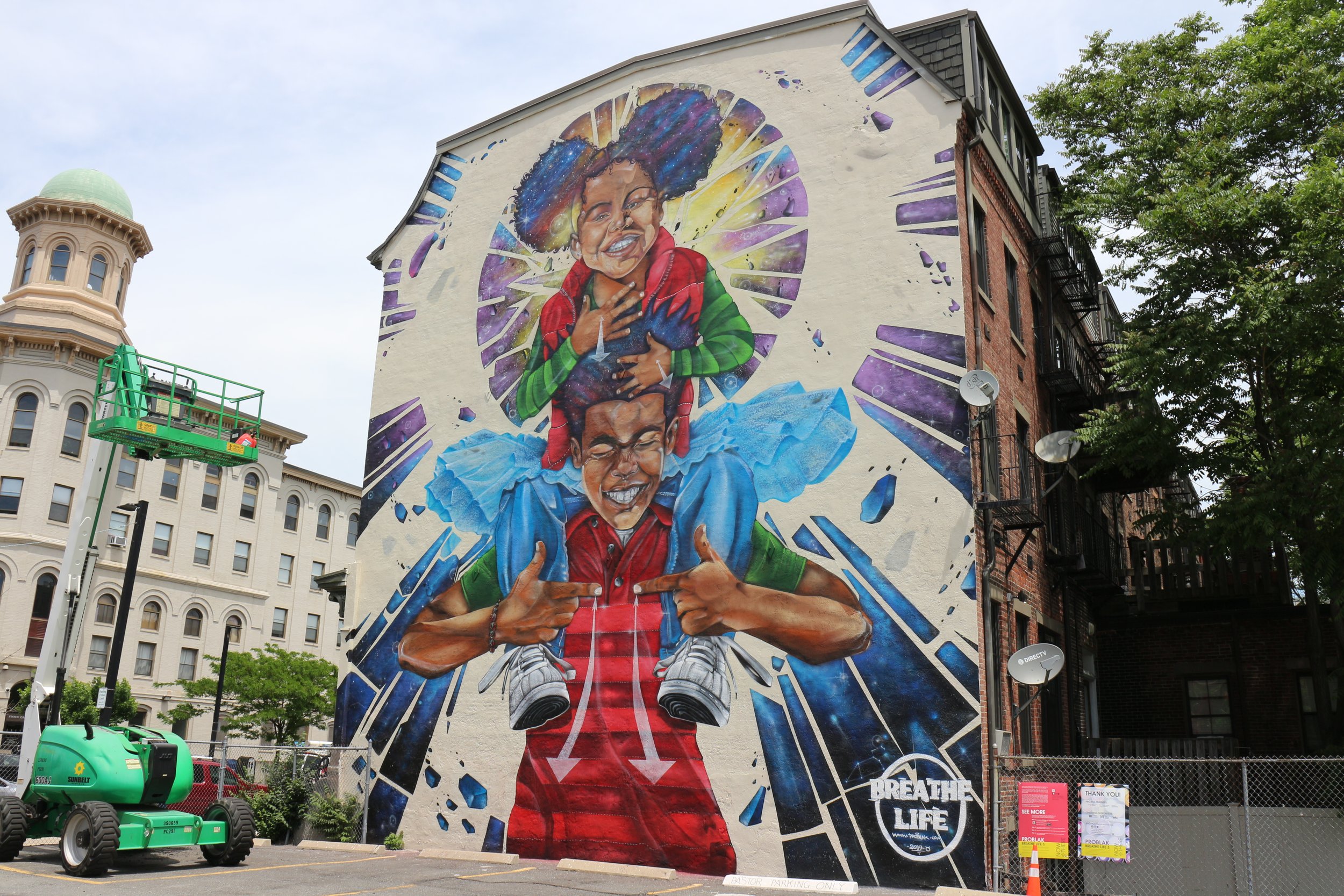Photo courtesy of Marguerite Wynter.
As a veteran of two Chicago Architectural Biennales, Marguerite Wynter brings FOMO-inducing stories of events we all missed out on—did we hear joy riding through the South Side?—and a deep commitment to engaging community in the co-creation of public art.
blu prinston, N+T Communications Assistant chatted with Marguerite Wynter about her Boston roots, what she learned in Chicago, and her excitement of becoming N+T’s first Director of Partnerships and Engagement, or the DoPE. Learn more about Marguerite below and drop her a line to welcome her to a new event, space, or idea!
Blu: What first got you interested in art?
Marguerite: I have two early art memories: First was my mother signing me up for pottery and painting classes every February school vacation week.
After each class, we would pick one piece together to either frame or display in our house. I always have such nostalgia for those carefree vacations whenever I see my artwork still hung around the house.
My second memory was seeing a Paul Gauguin exhibition at the Museum of Fine Arts, Boston with my mother and grandmother. It’s a full circle moment for me remembering that exhibit and now returning to Boston as an arts administrator.
B: You have a lot of experience working in museums and galleries. What has been your favorite part of working in museum spaces?
M: I love walking around the galleries to see how visitors are responding to the artwork and which pieces resonate with them. I’ve always been fascinated with how the audience interacts with both time-based media and performance art.
The entire process of seeing an exhibition come together with all the different departments having a hand in some aspect makes seeing the exhibition for the first time that more special. When working with Jimmy Robert on his iteration of Descendances du nu for the 2019 Chicago Architecture Biennial, I sat in on all performer auditions and then rehearsals but seeing all the hard work come to fruition for the first performance during the opening weekend was something I’ll never forget.
Descendances du nu (Chicago), Jimmy Robert, 2019. Photo: Daris Jasper. Image courtesy of Chicago Architecture Biennial.
B: What connections do you see between museum and art gallery settings compared to temporary public art installations? Are there lessons or learnings artists or the public can take from each?
M: Community engagement is a big parallel between museums, galleries, and public art. Our partnerships with community organizations and other art institutions are integral to all the work we’re doing. This is especially true with public art — we need to work together with our community partners to help the public better understand and engage with the work.
B: Your transition from Chicago to Boston is asking you to uproot yourself, which comes with great excitement and fear or tension. How are you hoping to root yourself again and flourish/prosper?
M: This will be the second big move of my career, the first moving from NYC to Chicago to be the Assistant Curator for the 2019 edition of the Chicago Architecture Biennial, …and other stories. After five years in Chicago, I’m so inspired by the people I’ve met and I look forward to bringing that same energy to Boston. I’m hoping once I’m in Boston to start to make connections by attending lots of programs and seeing what the art scene has to offer.
B: I saw you went to Northeastern University for your undergraduate degree – are you excited to return to Boston? What are you most looking forward to exploring in Boston’s art scene?
M: I’m most excited about the potential and opportunity that Boston has for the public art sphere. When I went to Northeastern it felt that the Museum of Fine Arts, Boston, and the Institute of Contemporary Art, Boston were the only places to experience art and that is just not the case anymore. I’m looking forward to exploring the communities that make up the city and how we can create connections to engage with public art.
B: Before Now + There, you were the Public Programs & Partnerships Manager for the Chicago Architecture Biennial. As we prepare to launch our Public Art Triennial in 2025, what opportunities do you see for the City of Boston that we might mirror from Chicago?
M: At its core, the Chicago Architecture Biennial sees the city of Chicago as the site, which is also very applicable to the Triennial. The Public Art Triennial is an opportunity to create a groundbreaking exhibition that changes how we think about art in our city. Aside from the art, we’ll be displaying in the Triennial, I’m looking forward to the programming—performances, film screenings, workshops— we develop to help the public better engage with the work. I’ve always tried to bring in a multitude of voices to give their interpretation of the art being shown and cannot wait for the opportunity to mirror that at Now + There.
Black JoyRide gives a tour of Bronzeville, a historic South Side Chicago neighborhood for the exhibition, Architecture of Reparations by Riff Studio, 2022. Photo by Marguerite Wynter.
Header Photo: Rob “Problak” Gibbs’s “Breathe Life 3” 2019. Photo courtesy of Casey Preston.




